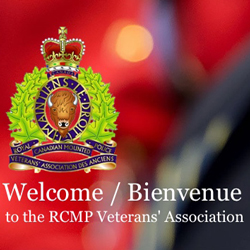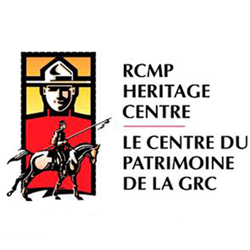Sgt. John Stinson
John V. Stinson was a typical young Ontario man looking for a sense of adventure in Westeran Canada or any where else.
Every member contributes their own to the Force’s history. In John Stinson’s case, he acquired acquired photographs of his time in the Force. His photo collection of the Force in Siberia is one of the most comprehensive outside the RCMP Heritage Center. Most of his photographs were used in creating the 6 part series of articles on “B” Squadron RNWMP article.
John Vincent Stinson was born on March 10, 1891 at Bobcaygeon, Ontario to the parents of Joseph and Mary Stinson. After finishing high school, both John and his younger brother Charles Stinson were attracted to the prospects of serving overseas with the Canadian Forces. His younger brother joined the 21st Battalion and would later killed (April 9, 1917) at Vimy Ridge . For John, he was attracted to the Royal Northwest Mounted Police as it was suggested that the Force would be sending over members to participate in World War I.
According to the “Report of the Royal Northwest Mounted Police – 1914 (page 8) “Shortly after the outbreak of the war on August 4, instructions were issued by you (Sir. Robert Borden – Prime Minister of Canada) to increase the strength by 500 men in order that the peace and good order of the provinces of Alberta and Saskatchewan ight be assured. According to the census of 1911 there are 173,568 Germans and Austrians in these prvinces, widely distributed and intermingled, not only with people of British origin, but with other nationalisties whose countries are allies of Great Britain. Antagonism between the races often grows acute during a great war, and it was felt that an increase of the force was necessary to impress upon all races that good order would be preserved, and that our alien enemies who quietly pursued their ordinary vocations and observed strictly their obigatioins as residents of this country, would receive adequate protection.”
The noted report further (page 25) stated “On the outbreak of war, it was decided to increase the strength by 500 on special terms of one year’s service and a separation allowance of $20 per month to families of married men. Special inducements were offered to ex-membersof the force to re-join, an all who did were placed in the rank held by them at the time of their discharge.
The standards were not lowered and exemplary character certificates were required. Recruiting commenced on the 8th of August and was completed on the 22nd of September; eighty-six ex-members re-joined. Recruiting was only carried on in Western Canada, and at least four times as many applications were received as were required. The recruits are an exceptionally fine lot, and their conduct has been excellent.”
On September 14, 1914, John joined and was accepted into the Force as a new recruit and assigned the regimental number 6256.
John Stinson pointed out “on arriving at Depot, it was found that the quarters were not large enough to hold all the extra men and tents were put up and an unused Indian school about a mile and a half from the main Barracks was called into use.”
For the vacant Indian school, local carpenters were employed to construct wooden-plank bunks. Some recruit bed were setup on wooden horse stands. Cloth mattress covers were filled by recruits with fresh straw. Carpenters also built several outhouses and eventually some stables.
At Depot, 120 of the new recruits were grouped into the Indian School Troops #1, #2 and #3. John Stinson was assigned to Troop #3. On a cold and sunny morning, three troops of green recruits and green horses made their way to the Indian School barracks.
Inspector Mark H. Vernon (Reg. #4975 – O.181) was in charge of the Indian School barracks and was supported by several NCOs. S/Major Cecil (nickname ‘woof-woof’) Hill (Reg. #4750) took charge of the stable and oversaw the training of horses and cadet. He was assisted by Sgt. ‘Teddy’ O’Neal and Sgt. Harry Fraser (Reg. #5499). The two NCO assigned to oversee Troop #3 were Corporals Arthur Paxton (Reg. #6043) and Lambert Burton (Reg. #5780).
Upon the recruits arriving at their new barracks, it was total confusion. Under the direction of S/Major Hill, the new Indian School barracks slowly started to resemble an organized barrack and stable base.
As in the typical fashion, the labour duties such as cooks, stable boys and grounds keepers were assigned to recruits. This type of money saving initiatives were popular in the early Force as it saved the government money and ensure the continuation of the Force. According to John Stinson “the main drawback was the grub, a chap named Vannick was the cook and he couldn’t. For a time, Cst. Joe McNamara (Reg. #6329) was one of the cooks and he was previously in the US Army and later left the Force to go overseas. The stables were built west of the central building (the Indian schoolhouse) and when we reached full strength the space was all occupied.“
The photograph to the left was taken when both Constables John Stinson and Dave McFalane were on ‘sick-list’ with a sore throat.
Sgt. ‘Teddy’ O’Neal kept the recruits busy with musical ride training. In the spring of 1915, the three troops participated in the Red Ribbon Circus at Moose Jaw, on July 1 performing afterwards at the Regina Exhibition and at other towns across the CPR main line.
After completing his training at the Indian School, Constable John Stinson was transferred to Maple Creek Saskatchewan. With no prospect of going overseas with the Force, he took his discharge after completing his term of engagement on April 24, 1916.
According to the Force’s Comptroller in 1915, “nearly all of the 500 one-year-term members had taken their discharge to volunteer for overseas service” in World War I.
In 1905, the province of Saskatchewan had become a province and relied on the Royal Northwest Mounted Police to provide policing services as they had done since 1973. Over the next decade, the Saskatchewan increases its requests of the Force to enforce various provincial statutes such as the unpopular liquor law. Apparently, many Force members refused to enforce the provincial Liquor Act.
Apparently, the original suggestion of settled aliens committing sabotage in Western Canada was found to be groundless. Faced with a situation of increasing demands by the Saskatchewan government in the area of policing priorities and an increasing need for the Force to become involved in the War Measures Act, the Government of Canada found it difficult to keep a dedicated number of Force members doing provincial policing work. Therefore, the Canadian Government decided not to re-negotiate the policing contracts with Alberta, Saskatchewan and Manitoba. Consequently, the Force contract ended on November 29,1916. The last day which the Force provided provincial police work in these provinces ended on December 31,1916.
For Saskatchewan, they established their own Saskatchewan Provincial Police force on January 1, 1917.
Twenty-nine members of this new police force were formerly members of the RNWMP. John Stinson was one of these new Saskatchewan Provincial Police force on April 24, 1917. He remained with them until April 30, 1918.
In the spring of 1918, the government of Canada agreed to permit the Force to create “A” Squadron RNWMP whose members would be send over to Europe to support the war efforts. With this approval, the Force advertised for recruits for this new Squadron.
Upon reading one of these advertisements, John Stinson applied and was accepted into the Force on May 5, 1918. Unfortunately, John Stinson became ill and was unable to head overseas with “A” Squadron. While at Depot in Regina recovering from his illness, the Force announced a second cavalry draft – “B” Squadron RNWMP which was to be sent to Siberia. John said that he submitted his application for “B” Squadron and was accepted.
On November 17, 1918, John Stinson and the main body of “B” Squadron RNWMP departed Vancouver for Vladivostok Siberia. The original intent for this cavalry unit was to land in Vladivostok and shortly thereafter advance to Omsk Siberia to support the new White Russian Army in their battle against the Bolsheviks along with other Canadian and Allied military units.
With World War I ending on November 11, 1918, the Borden government were under considerable domestic pressure not to get Canada involved in the internal conflicts of Russia. In the spring of 1919, it was decided to bring all Canadian Siberian Expeditionary Force members back to Canada.
Upon returning to Canada from Vladivostok Siberia, he took his discharge from the Force on July 9, 1919 and re-joined the Saskatchewan Provincial Police. While in the provincial police force, he rose to the rank of Corporal.
On April 1, 1932, the provincial police force was absorbed by the Force and John Stinson taken on strength again and retained his original regimental number. Back in the Force, he was stationed at Orkney (1932-33), Gull Lake(1933), Estevan(1934-39) and Weyburn Sub-Division (1939-1947). His promotions were – Lance Corporal in 1934, Corporal 1935 and Sergeant 1939.
His last post was as a Section NCO Sergeant at the Weyburn Subdivision.
On August 1, 1947, John Stinson retired from the Force and obtain a job as a security guard for the St. Mary Dam and Waterton Dam projects. After these projects were completed, he and wife moved to Vancouver where they enjoyed their retirement years. He passed away on April 5, 1982 at the age of 91.


 May 9, 2012
May 9, 2012 


















